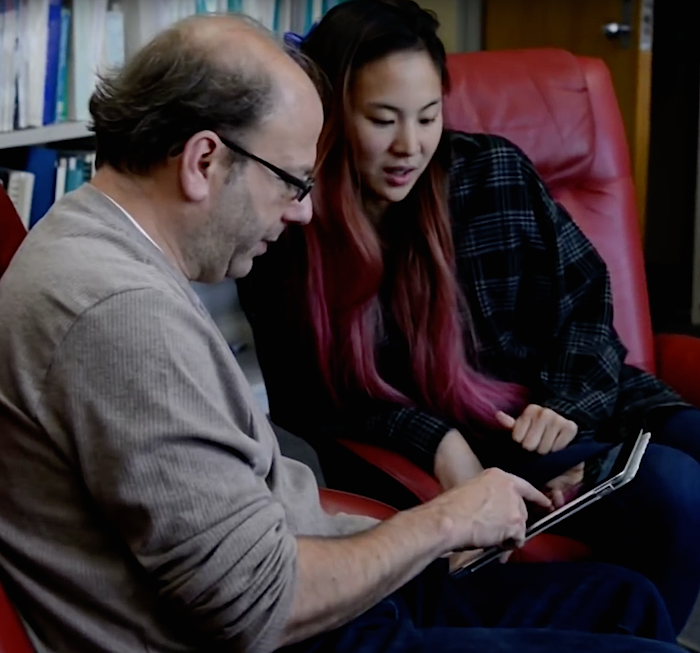 Two researchers in the Center for Automation Research (CfAR) were recently honored at Eurographics 2016, the prestigious international conference on computer graphics held this year in Lisbon, Portugal.
Two researchers in the Center for Automation Research (CfAR) were recently honored at Eurographics 2016, the prestigious international conference on computer graphics held this year in Lisbon, Portugal.
David Jacobs (left in photo), a professor of computer science with an appointment in UMIACS, and Angjoo Kanazawa (right in photo), a fifth-year doctoral student in computer science, received the Günter Enderle Best Paper Award for their research on three-dimensional modeling of deformable objects.
Jacobs and Kanazawa collaborated on the project with Shahar Kovalsky and Ronen Basri, both with the Weizmann Institute of Science in Israel.
“Learning 3-D Deformation of Animals from 2-D Images” examines the complexity of generating 3-D models of living objects.
The scientific knowledge for digitally capturing and reconstructing rigid objects like a chair or desk is fairly well established, says Kanazawa, who is lead author of the paper. But reconstructing the three-dimensional shape of a horse running in a field or a domesticated cat exploring your apartment is much more challenging.
“Cats are interesting because they are highly deformable—they can roll up into a ball,” Kanazawa says.
To address this problem, the researchers developed an animal-specific deformation framework that combines a sophisticated 3-D template mesh with multiple 2-D images of an animal.
Particular attention is paid to determining the “stiffness” of different parts of the object. An example would be where a cat’s joints will deform extensively depending on the feline’s movement, while more rigid aspects like their skull remain unchanged.
Jacobs, who advises Kanazawa in her graduate work at Maryland, says this research could ultimately help people identify different animal species, using improved computer vision technology to detect distinctive limb structures or facial markings.
Jacobs is involved in similar research with LeafSnap and BirdSnap—digital field guides for trees and birds, respectively—which rely on the user taking a 2-D still image of the object.
The CfAR researchers also see their work being useful in the 3-D printing of animal photographs, or in helping 3-D animators develop better visuals for virtual and augmented reality applications.
“I would much rather interact with moving cats in virtual reality than with a rigid chair,” says Kanazawa.
Go here to see photos of Kanazawa accepting the award.
Computing & Society